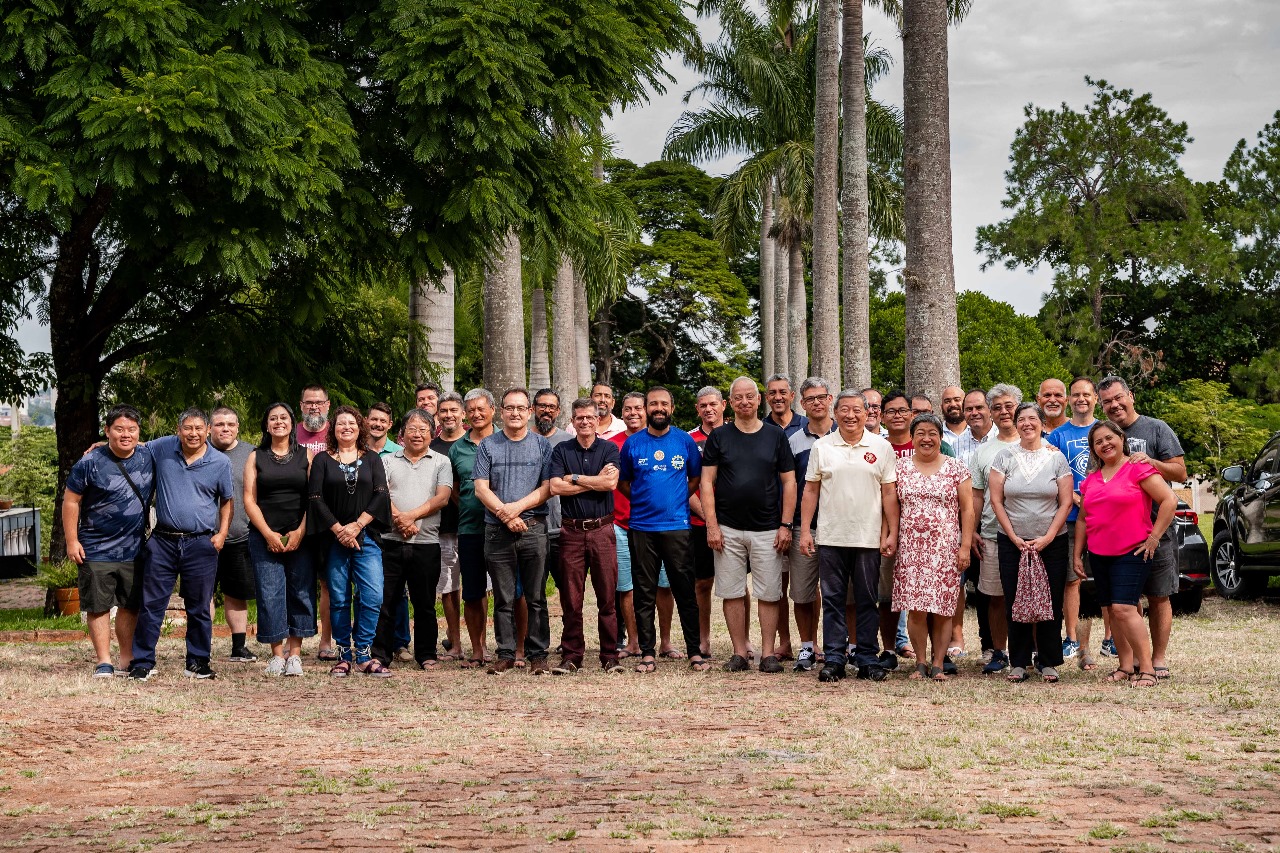Aliança Cristã e Missionária Brasileira (ACEMBRAS)
President: Rev. Jeremy Warden

STATISTICS (2023)

Membership
1,773

Churches
30

Ordained Ministers
47

Missionaries
12
In 1910, A.B. Simpson embarked on a trip that took him from the United States to South America. He arrived in Brazil and visited several cities, including Belém do Pará. The purpose of the trip was to understand the region and obtain data for a possible missionary effort. Later, he embarked and continued his trip to Argentina, Chile and other countries in South America. This visit was not the first made by an Alliance representative. In 1894, some Alliance missionaries began a work in Brazil in the city of Jaú, São Paulo. They established a church, a Bible Institute, and a children’s school. During this time, they also held itinerant ministries in the interior of Goiás and on the banks of the São Francisco River. However, in 1903, they ended up leaving Brazil due to relational problems between the missionaries.
A few years later between 1922 and 1923, the Alliance Mission sent the Clark brothers to Brazil to open a new mission field. After a year of exploration, traveling around 8,700 kilometers throughout Brazil, their goal was Bananal Island, Tocantins. They wanted to take the Gospel to the Karajás and Javaés Indians on the Araguaia River.
The trip began and ended in Belém do Pará. After the research work was completed, the Mission discovered that another mission would enter the same place. The Project was then canceled and the missionaries transferred to Peru! This expedition was recorded in the writings of R. R. Clark in “Bananal, or Among the Pagan Indians in Brazil.”
In 1959 a missionary sent by the Japanese Alliance, Mutsuko Ninomiya, arrived in Brazil. After studying the Portuguese language, she went to Brasília (the newly built capital of Brazil), to begin a work among the Japanese colony. She began a work in Núcleo Bandeirante and later in the satellite city of Gama.
The initial work was done alone with much sacrifice and difficulty. In 1961 the first missionaries of the American Alliance arrived: Samuel and Vera Barnes.
Rev. Hiroito Oye of the Japanese Alliance arrived in Brazil in 1964 and two years later, 1966, he began his work in Sao Paulo, which resulted in the Rudge Ramos Alliance Church. Four years later he returned to Japan.
During the 1960s more couples were sent by the American Alliance: the Tom Kyle family who went to Curitiba and the Dave Jones family to Brasilia.
In Curitiba, the missionaries did 100-day evangelistic campaigns and the Boa Vista church was organized. In 1969, an evangelistic campaign took place in the “Zinc Tabernacle”. Soon after the Capão da Imbuia Alliance Church was established. In 1973, the Alliance Seminary (precursor of A. W. Tozer Theological Seminary) was founded in Curitiba.
The Alliance arrived in Porto Alegre in 1972, with work beginning in Jardins das Palmeiras, with a Brazilian couple. During the 1970s, other missionary couples arrived in Brazil from the United States.
It was in 1978 that the Brazilian Christian and Missionary Alliance (ACEMBRAS) was organized in Gama, Federal District, and Rev. João Alves da Costa was elected the first president.
Colombian missionaries, Hernan and Edilma Osorio arrived in Manaus in 1966, contacting ACEMBRAS in the late 1970s. As a result, the church in Manaus joined the Alliance and Pastor Hernan became the second president of ACEMBRAS.
The American Alliance continued to invest in Brazil during the decade of 1980, sending several couples. They settled in Porto Alegre and São Paulo. As a result of this effort, the Alliance churches of Santa Fe Park (Porto Alegre) and Airport Alliance (São Paulo -1987) were established.
The 1990s were marked by conferences and a strong emphasis on pastoral ministry and missions. This was largely due to focus of the national church -ACEMBRAS. This was also the decade that the Brazilian Alliance began its first missionary efforts, both in Brazil and abroad.
In recent years, ACEMBRAS has sought to broaden its missionary base by planting new churches in Brazil without losing momentum and involvement with world missions.
In view of the political and economic crisis in Brazil today, there are many possibilities to plant more national churches. However, we must accept God’s challenge of making disciples of all nations, including the Brazilian nation itself.
